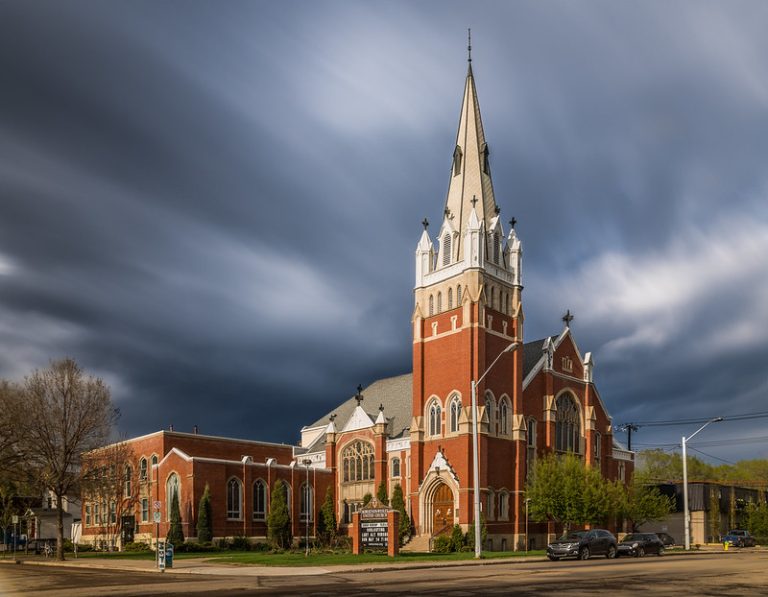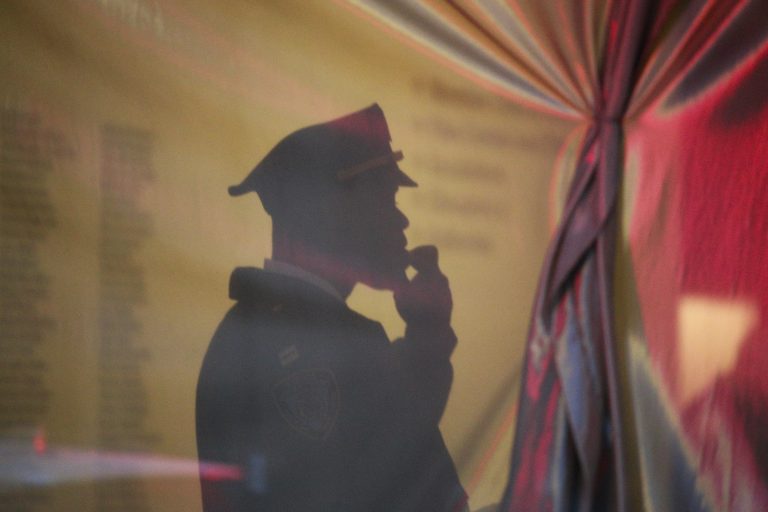A church that has stood for 120 years in the small town of Grouard in the Canadian Province of Alberta was destroyed by fire on May 22.
Two men have been arrested and charged with arson.
The arrest and charges were reported in a May 23 article by CTV News, which quoted Monsignor Charles Lavoie of the St. Bernard Catholic Church as stating, “The historical value of that church – like the paintings on the wall in the sanctuary were painted by bishop Grouard himself…We’re not going to be able to replace that in any way, shape or form.”
Grouard, located approximately 370 kilometers (229 miles) northwest of capital city Edmonton, is a hamlet home to less than 200 people, and borders the Kapawe’no First Nation.
The charged men were identified as Kenneth Ferguson, 56, and Gerald Capot, 50, believed to reside in nearby High Prairie by local media outlet Everything Grand Prairie.
Success
You are now signed up for our newsletter
Success
Check your email to complete sign up
May 23 reporting by federally-funded messaging outlet Canadian Broadcasting Corporation cited Chief Jason Cottingham of the fire department as stating battling the fire took 6 hours.
Although firefighters arrived on scene only five minutes after receiving the call, the fire appeared to have been “growing inside the structure for some time,” the CBC stated.
Cottingham was paraphrased as adding, “At one point, firefighters ran out of water supply in Grouard and had to start shuttling water over from Lesser Slave Lake.”
CTV noted the Church was connected to the residential school system, which is widely alleged to have killed native children at the beginning of the 20th Century, making churches the target of attacks and vandalism by far left entities in recent years.
“The St. Bernard Mission School ran in the area between 1894 and 1961, and a 2022 survey of the area uncovered 169 potential grave sites,” CTV stated.
Grouard resident Lorrie Anderson told CTV that she had a personal and family connection with the church and the residential school system, “You know, a lot of people have been affected by this residential school stuff, including my late parents…My grandmother, my Kookum, was also raised in a mission.”
CTV said St. Bernard was “the place her children and grandchildren were baptized and the place she laid her mother to rest.”
Anderson said, “I just can’t see any reason for somebody to set that church on fire…All they did was break the people. All for what, a little bit of fun?”
Archbishop Gerard Pettipas told CTV, “We know the situation of the cemetery in Grouard, it has a very complex history.”
He added, “I’ve never had a sense in my working with the Chief and Council, with anybody else in that community, that there was any sense of bitterness or judgment or anything related to that church.”
The website for the University of Manitoba’s National Center for Truth and Reconciliation holds an entry for St. Bernard, explaining the history as, “In the 1940s the school established a manual training building with a focus on Aboriginal handicrafts, an initiative that developed into a cooperative business venture. The school enrolled a large number of Métis students: by 1949 they accounted for half of the students in residence.”
Unfortunately, while the alleged arson may be isolated, it’s one of many even in recent weeks.
On May 1 in Barrhead, a town of 4,500 approximately 250 kilometers (155 miles) Southeast of Grouard, a 57-year-old woman from Camrose was caught on photograph with a gasoline can in hand attempting to start a fire at the St. Anne Parish Church, Town and Country Today reported.
The same woman is believed to have started a fire in a storage shed behind the town pub just 15 minutes later, the article states.
On April 28, a church in the hamlet of Cherry Grove, which sits on the border between Alberta and Saskatchewan and is home to 400 people, was burned to the ground at the same time that a fire at the local Canada Post outlet was started, CTV reported.
Regional fire Chief Dan Heney said, “We found some evidence on site that makes the fire very suspicious,” adding that, “The way the fire was acting also indicates it’s suspicious.”
On May 4, Global News reported that 29-year-old Cherry Grove resident John Cook was arrested and charged with 10 counts of arson in connection with both the church fire and a string of other blazes targeting homes, vehicles, and even the local rodeo grounds.
Arson is especially sensitive in Alberta amid record wildfires large enough that smoke blanketed the Southern metropolis of Calgary, leaving the sky hazed and yellow and the air quality extremely poor for over a week.
Historicplaces.ca, an official Parks Canada website, states that Grouard was named after Bishop Emile Grouard who manned the St. Bernard Mission from the early 1900s until his death in 1931.
St. Bernard Catholic Church was recognized for being influenced by architect Thomas Baillarge who “who injected the French-Canadian ecclesiastical style with eighteenth century French and British classicism.”
“The traditional elements of the French-Canadian parish church are still evident in the church: the influence of the medieval French ecclesiastical style is seen in the tall central spire, while Baroque influences are embodied in the church’s elaborate and elegant interior,” the website states.
It added, “Baillarge’s classicist ideals are most clearly expressed in the round-arched classical windows, the more classical proportions – with a higher nave wall and a less steeply sloped roof – and the overall sense of balance and symmetry.”
Describing Grouard as someone who “profoundly influenced the religious life and social development of northern Alberta,” Historic Places attributes him the primary achievements of having “his translation and printing of prayer books in Native syllabics and his role in encouraging the northern tribes to sign Treaty 8 with the government in 1899.”
Grouard was buried in the church cemetery upon his death.














